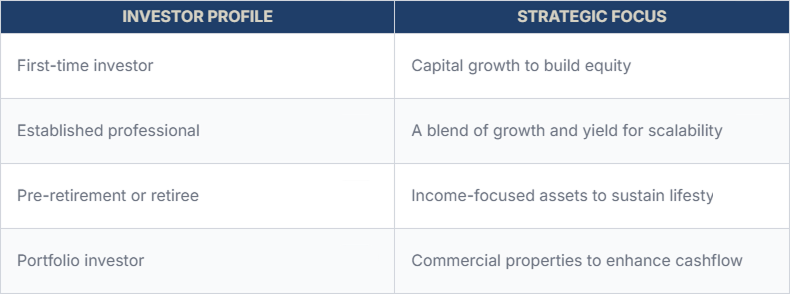Why Chasing Capital Growth Builds Your Wealth and Chasing Cash Flow Protects It
In today’s property investment landscape, strategy is everything. The traditional notion of holding underperforming assets for long-term capital gains no longer suits every investor, particularly in a high-cost, high-rate environment. Understanding when to prioritise capital growth and when to shift focus to income-producing assets is crucial to achieving long-term financial success.
At Rethink Investing, we support investors at all stages of their journey. Whether you are just starting out, scaling your portfolio, or protecting hard-earned wealth in retirement, the right balance of capital growth and cash flow can make all the difference.
Capital Growth: The Foundation of Wealth Creation
Capital growth refers to the increase in a property's value over time. It is one of the most powerful tools for growing net worth and enabling future investment opportunities through equity release.
Growth-focused investments are commonly found in residential markets, particularly in early-stage suburbs earmarked for regeneration, infrastructure development, or demographic uplift. These areas are often positioned to benefit from long-term uplift driven by strong demand and limited supply.
Capital growth is typically the right strategy when:
- You are early in your investment journey and have strong income
- You want to build long-term equity and scale your portfolio
- You are investing in high-growth corridors with infrastructure upside
- Market conditions favour capital appreciation (e.g. rising population, limited housing stock)
At Rethink Investing, we identify growth locations using in-depth market research, on-the-ground insights, and forward-looking data models to give clients first-mover advantage.
Cash flow: The Engine That Sustains and Protects
Positive cash flow is now more valuable than ever. In a market where interest rates remain elevated and cost-of-living pressures are widespread, many investors are shifting their focus from speculation to sustainability.
Cash flow assets, typically commercial properties with long-term leases, generate income from day one. They deliver net yield well above residential property norms and are often leased to national tenants on secure, multi-year terms.
Cash flow should be the priority when:
- You require passive income or are nearing retirement
- You are managing serviceability with multiple assets
- You want to reduce portfolio risk and increase holding power
- You are seeking to offset tax liabilities with positively geared assets
Unlike residential assets, where investors often rely on future value, cashflow-focused commercial investments deliver immediate financial performance and allow for more predictable, risk-adjusted returns.
How Affordability Has Changed the Investment Landscape
Housing affordability in Australia has reached a crisis point; Median house prices now exceed 12 times the average income, placing immense pressure on investors using negative gearing strategies to hold underperforming residential assets.
This shift has forced a widespread reassessment of investment fundamentals:
- Cash flow has become a priority, particularly for investors without the borrowing capacity to carry losses.
- Properties must perform from day one, as investors can no longer rely on long-term capital gains to justify poor short-term returns.
- Diversification across asset types, particularly into high-yielding commercial real estate, has emerged as a preferred strategy to navigate volatility and rising costs.
The affordability crunch has not just changed the rules; it has reset expectations. Yield-first is no longer a niche strategy. It is becoming the new norm for smart, risk-adjusted investing.
Why the Best Portfolios Balance Both
Growth and income are not mutually exclusive. In fact, most high-performing portfolios combine both strategically and at the right time.

Strategic Clarity for Lasting Success
Chasing capital growth builds your wealth. Chasing cash flow protects it.
In today’s market defined by affordability constraints, rate pressure, and increased financial scrutiny, your investment strategy must be as resilient as the assets you choose. A tailored mix of capital growth and yield is no longer optional; it is essential for navigating uncertainty and delivering results.



.webp)





